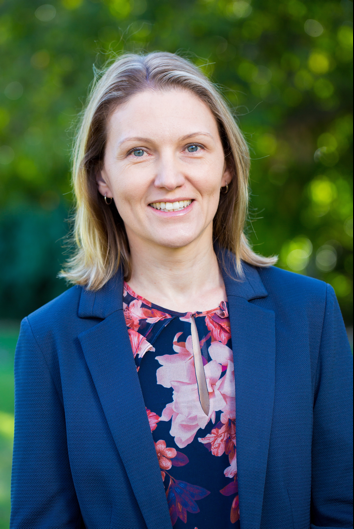Catch Kate Scrivener's free TRAIN programme and improve post-stroke rehabilitation options

Significant numbers of UK-based physiotherapy students and physiotherapists who watched a series of free training modules hosted by Macquarie University in Sydney said they felt more confident about treating people who have had a stroke afterwards.
The programme is titled: TRAIN: A clinician's guide to effective task specific training. To find out more about TRAIN's goals, PhysioUpdate caught up with the programme’s creator Kate Scrivener, a senior lecturer at Macquarie who wanted to offer something new to her students. ‘The TRAIN program was initially developed to support the Macquarie University physiotherapy students to learn how to implement task specific practice in stroke rehabilitation,’ she explains.
The topics covered in five separate sections are
- seated reach
- sit to stand
- standing
- stepping
- walking
- a post-module feedback survey completes the set
What inspired Dr Scrivener to create TRAIN?
‘I could see the need for them to visualise practical skills outside of class and see authentic examples of application to people after stroke.’ After working alongside learning designers and final year Macquarie students to develop the programme, Dr Scrivener decided that it could also benefit the wider profession – and an inspired decision was taken to make it freely available.
UK audience numbers for TRAIN
Dr Scrivener points out that TRAIN is accessed about 397 times a month, with users coming from 69 countries – one fifth of whom (21 per cent) hail from the UK, the second largest group of users after those based in Australia (49 per cent). A research study showed how highly users valued the training package.
‘In 2021 we published an evaluation of TRAIN, which contained survey results from between 140 and 450 users. Users reported improved knowledge (up 1.9 points out of 10) and confidence after accessing TRAIN (up 1.7 points out of 10),' Dr Scrivener says. 'Almost every user (99 per cent) said they would recommend the modules to others.
‘The feedback was really positive – suggesting the modules were clear and clinically relevant. Some users suggested the content was more suitable for students or new starters.’
My absolute favourite area of practice is helping someone learn to walk again after stroke and see them take their first independent steps
What led Dr Scrivener into the stroke field?
‘Physiotherapy after stroke is such a great area of practice!’ she says without hesitation. ‘There is the potential to really impact outcomes by doing the right things, enough of them and doing them well.
‘A great example of this is task specific practice: there is a huge body of evidence suggesting this is effective at improving activity performance. My absolute favourite area of practice is helping someone learn to walk again after stroke and see them take their first independent steps.’
StrokeEd: coming to the UK in 2023
Dr Scrivener is also involved with a company called StrokeEd, which was originally set up by Karl Schurr and Annie McClusky (Simone Dorsch and Dr Scrivener joined the prestigious team more recently).
‘The main aim of StrokeEd was to provide evidence-based training and resources for therapists interested in stroke rehabilitation,' Dr Scrivener explains.
'There is now great demand for workshops across Australia and internationally. There are workshops in the UK early next year (see website for dates and locations). We are also trying to grow our online resources and workshops, to improve access internationally.’ Visit: www.strokeed.com
Are responses to stroke improving?
Dr Scrivener responds: ‘I believe physiotherapy after stroke improves all the time! We are lucky to have access to a significant base of evidence, summarised in guidelines, that helps us know what to do to improve outcomes.
‘There are some challenges to stroke services in Australia – particularly in being able to support people after stroke to access physiotherapy when required in the longer term. Having strong community-based programmes in the longer term is very important, in my opinion.
She adds: 'I can see some great innovation emerging in the UK – one of the most discussed intensive upper limb programmes is from Queen’s Square. It also seems that in the UK technology and robotics are more readily available than in Australia.'
Rehab priorities
PhysioUpdate asked Dr Scrivener to give three priority areas for physiotherapists working in stroke rehabilitation. She replies: 'Great question! Specifically, in physiotherapy after stroke I can identify three priority areas:
- intensity of practice: making sure enough repetitions of practice are occurring to change outcomes and drive neuroplasticity.
- moving forward not looking back: being ready to change and embrace change as evidence emerges, to let go of our bias and areas of practice that are now not supported by evidence. I can see practice really changing as technology emerges and robotics are more affordable (as examples), whereas other things we did regularly 10 years ago we now know do not work; we need to be ready to change.
- long-term support for mobility and physical activity: while the focus of rehabilitation is often the hospital, I think we need to shift our focus to the longer term. Stroke is a life-long condition, we know most people after stroke will have some limitations for the rest of their lives. For some, mobility will actually deteriorate over time. Physiotherapists are well skilled in how to address this. Longer term programmes focused on mobility and physical activity are really important.'
To access the TRAIN programme, visit: https://sites.google.com/mq.edu.au/train-program/home
To read the paper on the evaluation of the TRAIN programme by Scrivener K et al. (2021) Examining user perspective of an online learning resource for physiotherapists: A mixed methods study of the TRAIN program. Physiotherapy Research International. See: https://onlinelibrary.wiley.com/doi/abs/10.1002/pri.1917
To read an article that Dr Scrivener and colleagues wrote for the Medical Journal of Australia earlier this year on some of the topics highlighted in this article, visit: https://onlinelibrary.wiley.com/doi/epdf/10.5694/mja2.5169
Share it with














